*NURSING > CASE STUDY > CARE OF TH C475 Competency #1 Compassionate and Respectful Care of Older Adults | Western Governors (All)
CARE OF TH C475 Competency #1 Compassionate and Respectful Care of Older Adults | Western Governors University
Document Content and Description Below
STUDY GUIDE for Care of the Older Adult Objective Assessment #1 Competency 742.1.1: Compassionate and Respectful Care of Older Adults Key Concepts: The student should be familiar with the growing ... aging population and the impact this group will have on the healthcare system. Baby boomers have unique characteristics that can mean challenges for healthcare professionals. The baby boomer group is considered more affluent, better educated & healthier. Attitudes about ageing have changed for the positive, related to the fact that there is an increasing number of baby boomers who see aging as a time in which quality-of-life issues are a priority. Because of the large number of older adults, there is a greater representation of the top five racial groups in the United States. (Perceptions regarding health care, wellness, and disease.)The student should be able to demonstrate an ability to provide culturally sensitive care. European Americans: Generally, do not have close ties to their extended families as other cultural groups. Tend to be individualistic when it comes to healthcare, often presenting a stoic attitude about illness. Can lose their self-worth when reaching retirement age. More accepting of the paternalistic nature of the healthcare system, are generally more trusting of authority & therefore tend to follow the advice of healthcare providers to engage in more physical & mental activity. Top five healthcare disparities include 1) Smoking by pregnant woman 2) drug- induced deaths 3) deaths from poisoning 4) deaths from melanoma 5) deaths from chronic lower respiratory disease. The US healthcare system is primarily designed to meet the needs of European Americans. African Americans: Second largest minority group in US, just recently being overtaken by Hispanics. Majority live in the south (54.8%) or in large metropolitan areas such as NY city, Chicago, Detroit, Philadelphia, & Baltimore. Religions vary as much as European Am, but most are protestant (Baptist, Pentecostal, & others) A fait number of African Americans are Muslim or followers of Islam. It is therefore of vital importance not to generalize, about any particular culture but to inquire about religious beliefs & practices, instead of making assumptions. The role of religion plays an important part in the African American health & wellness belief system. Often they equate good luck, good fortune & good health with being right with god. Therefore, disease & illness can be thought of as being in disfavor with god & incurring his wrath. Likewise, African Americans believe they have less control over their health & wellbeing than god. And, illness & disease is part of “gods plan”. Coping strategies include dealinf with it, engaging in life, exercising, seeking information, relying on god, changing dietary patterns, medicating, self-monitoring, & self-advocacy. Racism may affect trust in healthcare providers, adherence with medical advice, & self-management of chronic health problems. Hispanic Americans: Have recently become the 2nd largest demographic population in the US & as a result of immigration & higher than average birth rates, the number of Hispanic Americans (people of Latin decent) is projected to comprise 29% of the US population by the year 2050. Most place a high value on family, religion & community. Hispanic cultures emphasize family interdependence over independence. For this population, Self-care is not as important as receiving care in recovery from illness. An individual who becomes ill will turn to the family first before seeking outside healthcare. The Hispanic, especially the elderly, will seek the use of homeopathic medicinal remedies in conjunction with religious artifacts before engaging a healthcare professional. Additionally, direct disagreement with a healthcare provider is uncommon; the usual response to a decision that the patient or family disagrees with is silence & noncompliance. Hispanic Americans may choose not to seek health care because they, like members of their cultures & religions, feel that their affliction is a punishment for sins. However, a growing number of Hispanic Americans do not seek healthcare because they do not have access. This could be because they lack insurance, have communication difficulties, or fear legal ramifications for residing in the country illegally. Most are catholic and some still subscribe to a more naturalistic approach which strives to achieve a balance between “hot” & “cold “within the body. Illnesses are categorized as either hot or cold & treated with reciprocal type of substance, found in either medicine or food. Health disparities include 1) congenital herpes 2) new cases of tuberculosis 3) new cases of AIDS 4) Exposure to particulate matter 5) Cirrhosis deaths. Diabetes & heart disease have an increased prevalence & mortality in this demographic. Asian Americans: The majority of Asian Americans are Chinese. Most Asian Americans’ health beliefs and practices follow the same trajectory as other cultures within the United States; that is, the more acculturated to Western traditions, the more they move toward the scientific theory of health and illness. The most traditional and least acculturated elderly Asian Americans may still practice holistic (naturalistic) medicine and may incorporate this as an adjunct to allopathic (Western) medicine. Some of these herbal supplements may have undesired effects when combined with prescribed medications; therefore, it is vital that all complementary medicine and treatment be taken into consideration in directing care for individuals Chinese cultural beliefs are influenced by forms of Buddhism, Confucianism, and Taoism; however, the majority of the influence comes from Confucianism. Confucianism stresses accommodation and avoids confrontation, and heavily influences health beliefs and practices. Confucianism follows a naturalistic perspective, defining health and illness as a balance between the individual and the world around the individual. Individuals are a component of the universe, and it is believed that the individual should strive to be in harmony with the universe in which he or she lives. The basic concept of Chinese medicine is that all things, including the body, are composed of opposing forces called yin and yang. Health is said to depend on the balance of these forces. Chinese medicine focuses on maintaining the yin- yang balance to maintain health and prevent illness. If the balance between yin and yang is broken, it is essential to restore this balance to bring about health. To regain balance, the belief is that the balance between the internal body organs and the external elements of earth, fire, water, wood, and metal must be adjusted Treatment to regain balance may involve:• Acupuncture• Moxibustion (the burning of herbal leaves on or near the body)• Cupping (the use of warmed glass jars to create suction on certain points of the body)• Massage• Herbal remedies• Movement and concentration exercises (such as tai chi) Some elderly Chinese patients may forgo life-sustaining treatment because of the principle of ren. Ren is considered the golden rule of Chinese decision making and is embodied in Confucius’s axiom, “Do not do to others what you do not want done to yourself” health disparities for Asian Americans as 1) new cases of tuberculosis, 2) congenital syphilis, 3) no Papanicolaou (Pap) test among females older than 18, 4) exposure to particulate matter, and 5) carbon monoxide exposure. Native Americans: There are about 500 different Native American tribes within the United States. Nearly half of these 2.4 million people reside in the western part of the country due to forced migration. The two predominant tribes are the Cherokee and the Navajo, each with more than a quarter million people (Spector, 2004). American Indians did not immigrate to the United States; therefore, the process of acculturation does not apply. In fact, many American Indians’ culture is insulated from the rest of the country, either literally (by way of land reservation) or in other ways such as linguistically. For example, the majority of Navajo people speak both English and Navajo, but many speak Navajo alone and require an interpreter when interacting with someone who does not speak Navajo (Hanley, 2004).Like other cultures throughout the world, Native Americans follow a naturalistic approach to health and illness, believing that health is a balance of the mind, body, and spirit, and illness occurs when there is an imbalance or disharmony with nature (Spector, 2004). Native American religion is centered on legends of sacred spirits that take many forms, some human and some animal. Native American health beliefs and practices are blended with religion, thus carrying a magic facet as well as holistic and naturalistic approaches (Hanley, 2004).The top five health disparities for Native Americans and Alaska Natives are 1) fetal alcohol syndrome, 2) smoking by pregnant women, 3) alcohol-related motor vehicle deaths, 4) cirrhosis deaths, and 5) new cases of gonorrhea (Keppel, 2007). All of these disparities point to the lack of effective programs to reduce alcohol consumption among those Native American individuals who are at high risk of alcoholism. Aging can cause physiological, psychological and social changes. These changes may affect how older adults communicate and understand. The student should be able to identify these age-related changes that may affect therapeutic communication. Vision Changes in lens, pupil, and iris Results in poor visual acuity, presbyopia, increased sensitivity to light and glare Macular degeneration Diabetic retinopathy Glaucoma Senile cataracts Retinal detachment Isolation, insecurity, decrease in exchange of communication, embarrassment, depression Hearing Conductive problems Sensorineural problems Presbycusis Hearing loss due to exposure to: noise, ototoxic substances, Inattention, repetitive questions, isolation, insecurity, decrease in social functioning, Results in loss in medications, poisons, depression, sensitivity to acute trauma, certain loneliness, pitch with high- frequency consonants, poor word recognition medical conditions difficulties in following instructions Speech and language Decreased respiration Overproduction of mucus/reduced saliva Loss of teeth Decreased elasticity and muscle tone Results in shaky and breathy voice, voice may sound tremulous, frequent attempts at Dysarthria Verbal apraxia Aphasia Chronic obstructive pulmonary disease Mechanical ventilation Laryngectomy Deficits vary dramatically but may result in: difficulties producing language, difficulties in producing coherent and meaningful verbal communicati on, or difficulties in understanding verbal communicati on throat clearing, change s in articulation, semantic errors Touch Reduction in number of receptors Reduction in blood flow Results in a reduction in tactile and vibration sensations, decreased sensitivity to warm or cold stimuli Many medical conditions such as dementia, Parkinson’s, or diabetes can impact somatosensory functioning Use of the mouth to explore the quality of the objects, safety might be compromised Movement Due to decline in many sensory organs, cognitive functioning, and bodily strength Results in reduced velocity and accuracy and greater variability across individuals Parkinson’s disease Disability Reduced ability to communicate nonverbal information, insecurity, and loss of independence Cognitive Decline in information processing speed, divided attention, sustained attention, ability Delirium Dementia: Alzheimer’s disease Depending on cognitive impairment, loss may result in complete disorientation and inappropriate to perform visuospatial tasks, and short- term memory response, difficulties finding words, depression, loss of insight, isolation, or impairment in ability to learn new information In general, older adults report Psychologic levels of satisfaction that are similar to those of younger adults “ There are several ways nurses can communicate or assist patients with disabilities such as hearing deficits, vision impairments, or aphasia and dysarthria. Hearing aids and other available assistive listening devices can aid the patient in maintaining a healthy quality of life. The student should be familiar with the different forms of technology and be able to connect the patient to the appropriate resources. The goal of low-vision care and other vision rehabilitation services is to maximize a person’s usable sight and utilization of other sensory functions in combination with adaptive technologies and devices to perform usual, routine tasks” (Stuen & Faye, 2003, p. 9). Without rehabilitative care, elders are at risk for depression, anxiety, and communicative difficulties. Consider the following example: THE IMPACT OF VISUAL DEFICITS ON COMMUNICATION Declining visual skills may result in gradual isolation and a decrease in exchange of communication with the environment. As the person becomes less able to navigate outside of his or her home, he or she may become less socially active. Visual impairment may be a source of embarrassment to the older adult and serve to decrease the likelihood that he or she will engage in public activities (e.g., eating out in a restaurant, attending social gatherings) and further his or her isolation. COMMUNICATION TIPS When interacting with older adults with visual problems, it is important to position objects within their visual field. This includes positioning yourself within their visual field when speaking with the person. This helps the person to locate the object of conversation and to orient him or her to the topic of conversation. When assisting elders with their care needs, it may be useful to give them a verbal indication of the actions you are about to impart, so as to avoid startling or scaring them needlessly (Family Development and Resource Management, 2004). It may be necessary to assist the person in labeling objects or to simplify what is in their visual field (e.g., reduce unnecessary clutter). A more extreme situation is the case of visual illusions (distorted perceptions of vision). Due to the aging eye’s decreased elasticity and accommodation abilities, an older adult may perceive objects or the difference between light and shadow at the edge of the field of vision as visual illusions. Other visual misperceptions include seeing little flecks or spots in the visual field when in bright light, or seeing shadows as people. Hearing aids are some of the most common and economical devices used by people with hearing deficits. Consider the types of hearing aids that would best suit the older adult. Some patients have several deficits that affect their communication abilities. Consider patients who are post-CVA, have traumatic brain injuries or paralysis, and what technology could assist them for more effective communication abilities. Communication may also stem from language and cultural differences. [Show More]
Last updated: 2 years ago
Preview 1 out of 7 pages
 (1).png)
Buy this document to get the full access instantly
Instant Download Access after purchase
Buy NowInstant download
We Accept:

Reviews( 0 )
$8.00
Can't find what you want? Try our AI powered Search
Document information
Connected school, study & course
About the document
Uploaded On
May 25, 2021
Number of pages
7
Written in
Additional information
This document has been written for:
Uploaded
May 25, 2021
Downloads
0
Views
99



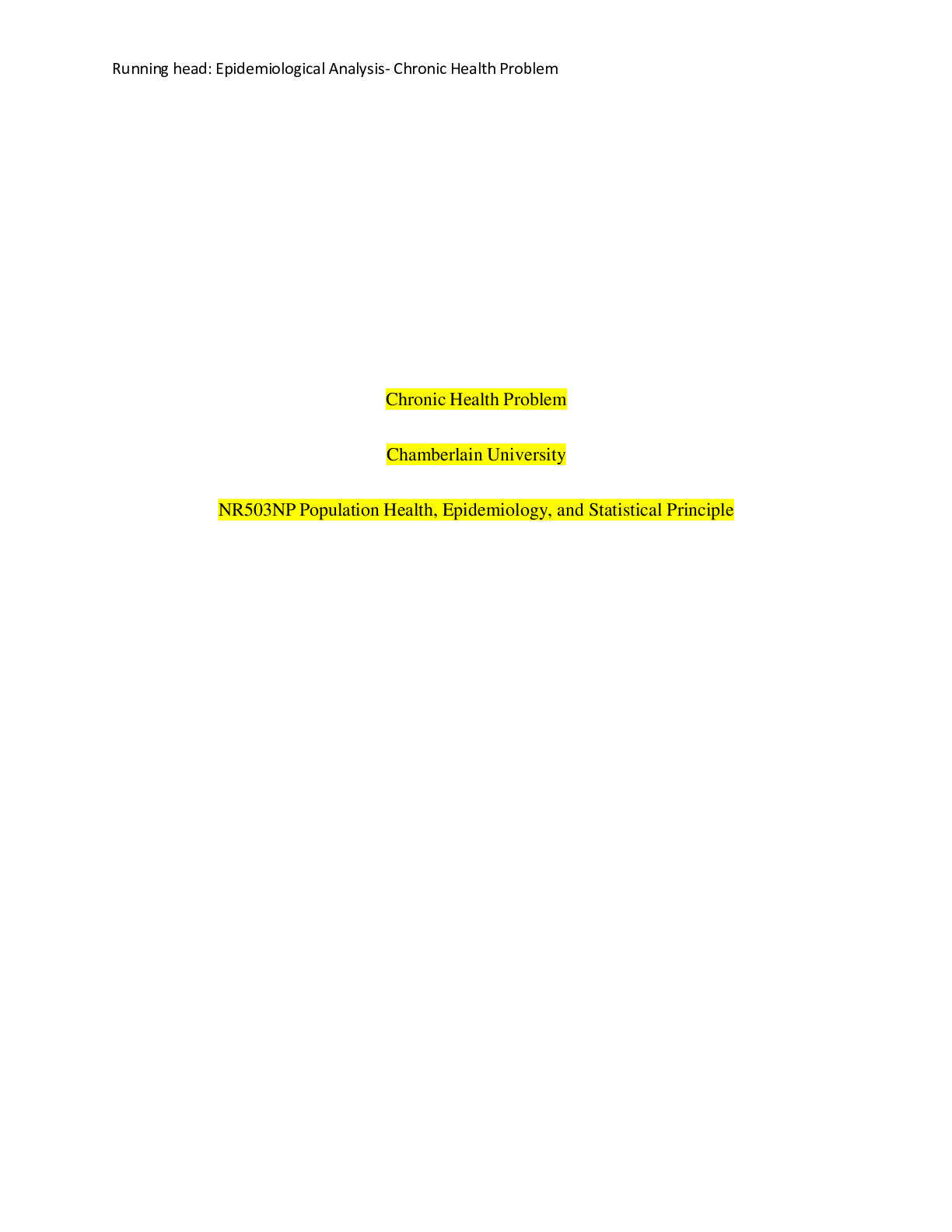
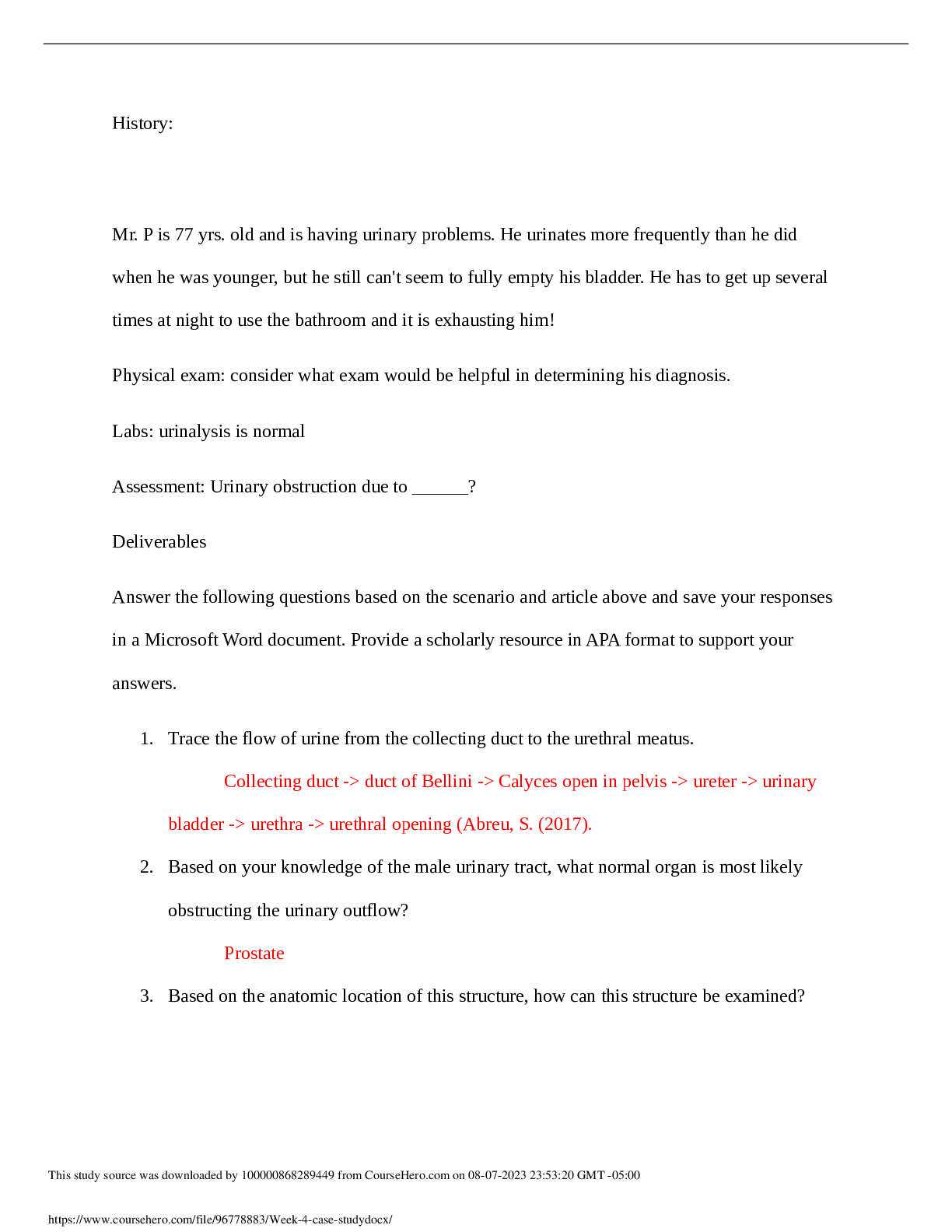

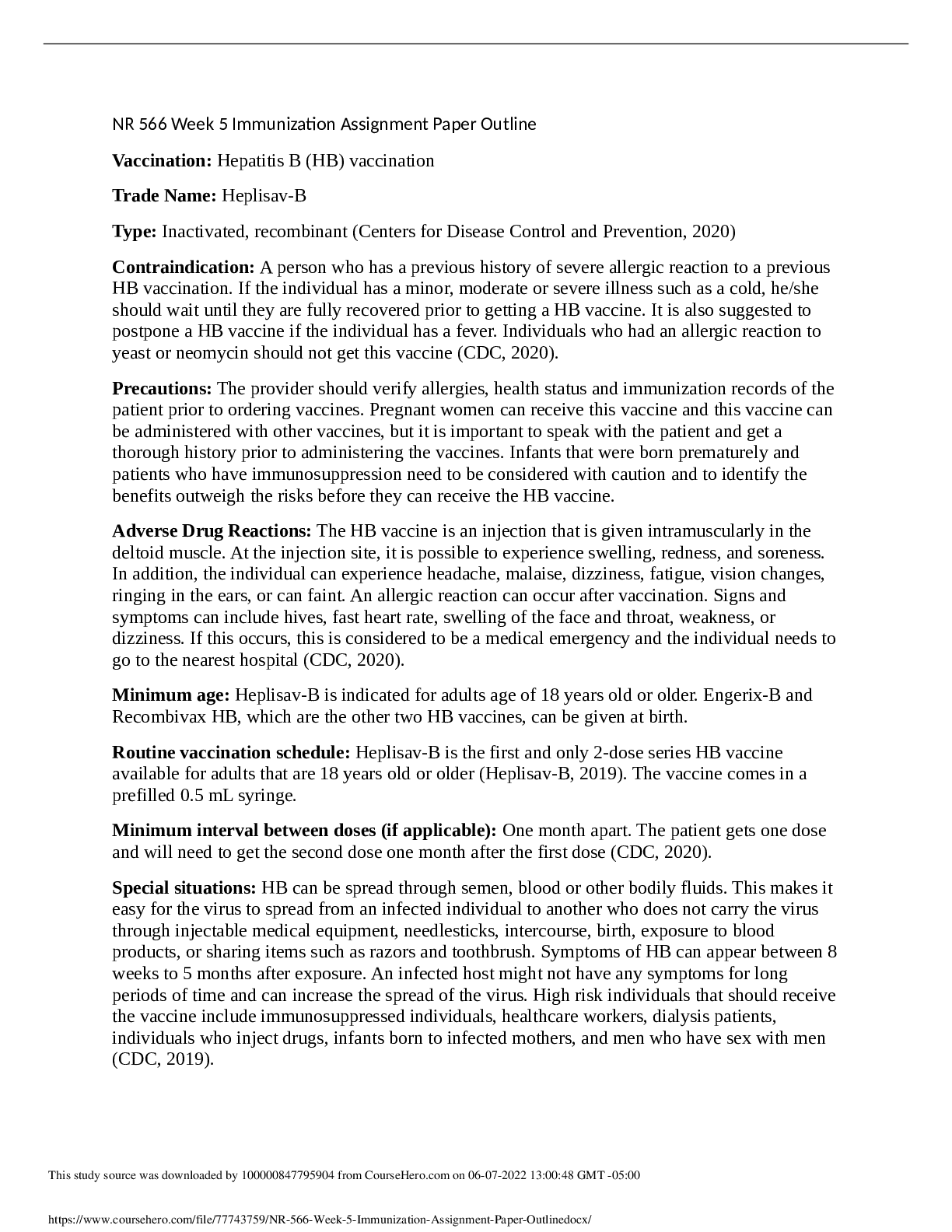
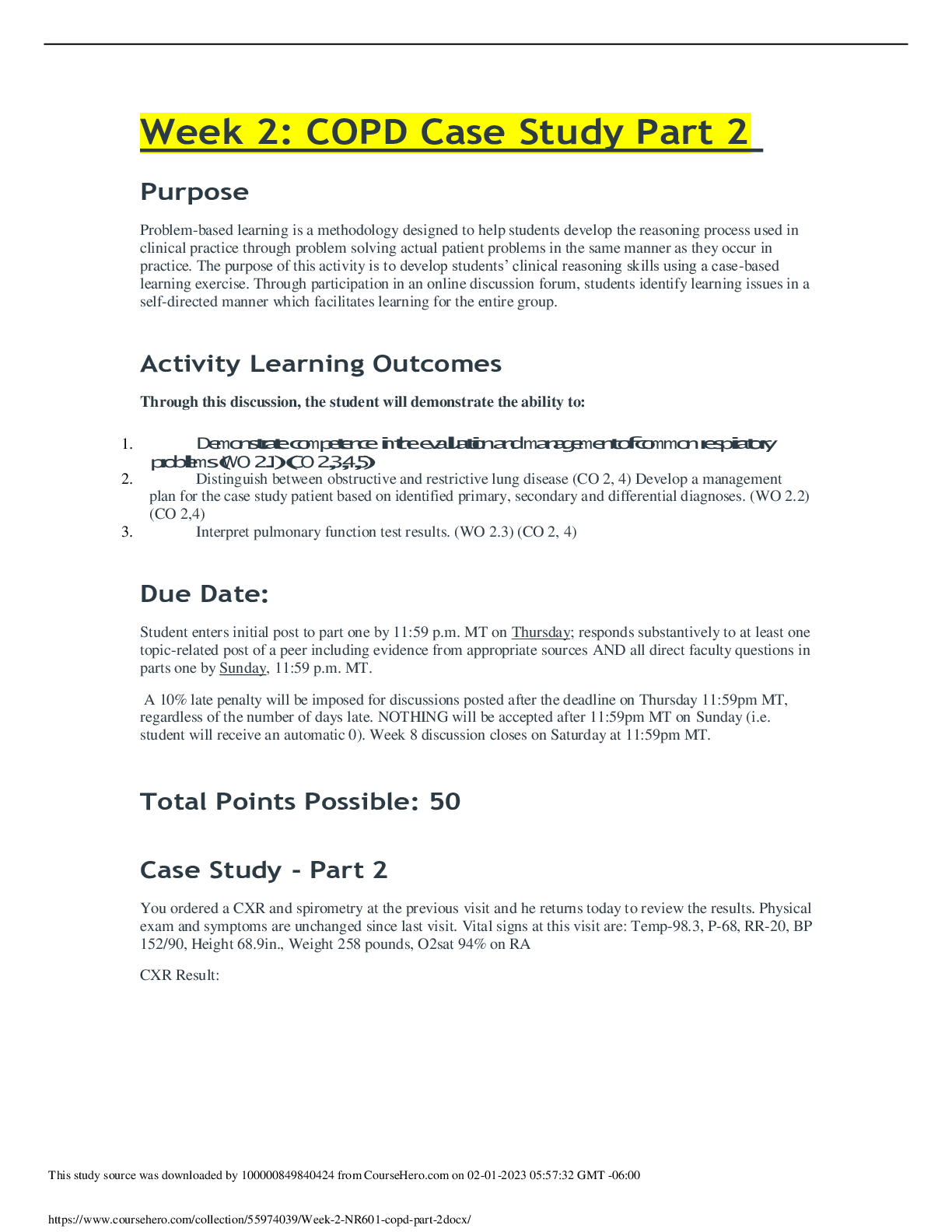


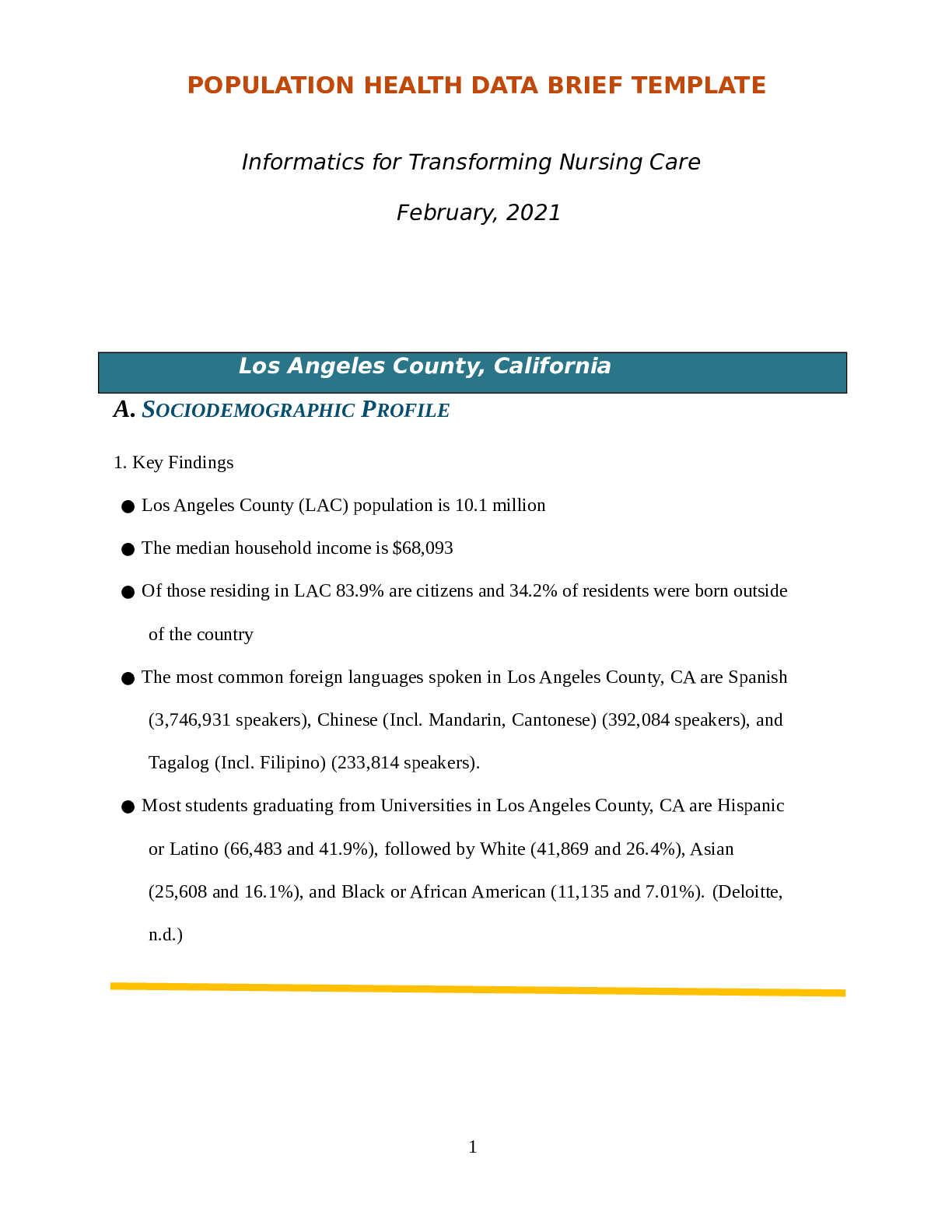





.png)








